Since starting on this toy photography path, I have been collecting and shooting articulated action figures. If you listened to my interview on the Toy Photographers podcast, I mentioned how I loved having a physical toy that reminds me of my youth. And although I didn’t say it in the interview and haven’t shown it in my photography, I am a fan of LEGO.
I still have my LEGO from when I was a lot younger, from a time when the LEGO car wasn’t as flashy as it is today, but more of a square, box shape. The faces of the figures were all uniform with the two eyes and smile, and the only way to differentiate the characters was by the headgear they wore.
I had the old-school fire station and Shell garage, the original Benny the spaceman, the construction site crane, light-up police van and helicopter, to name a few.
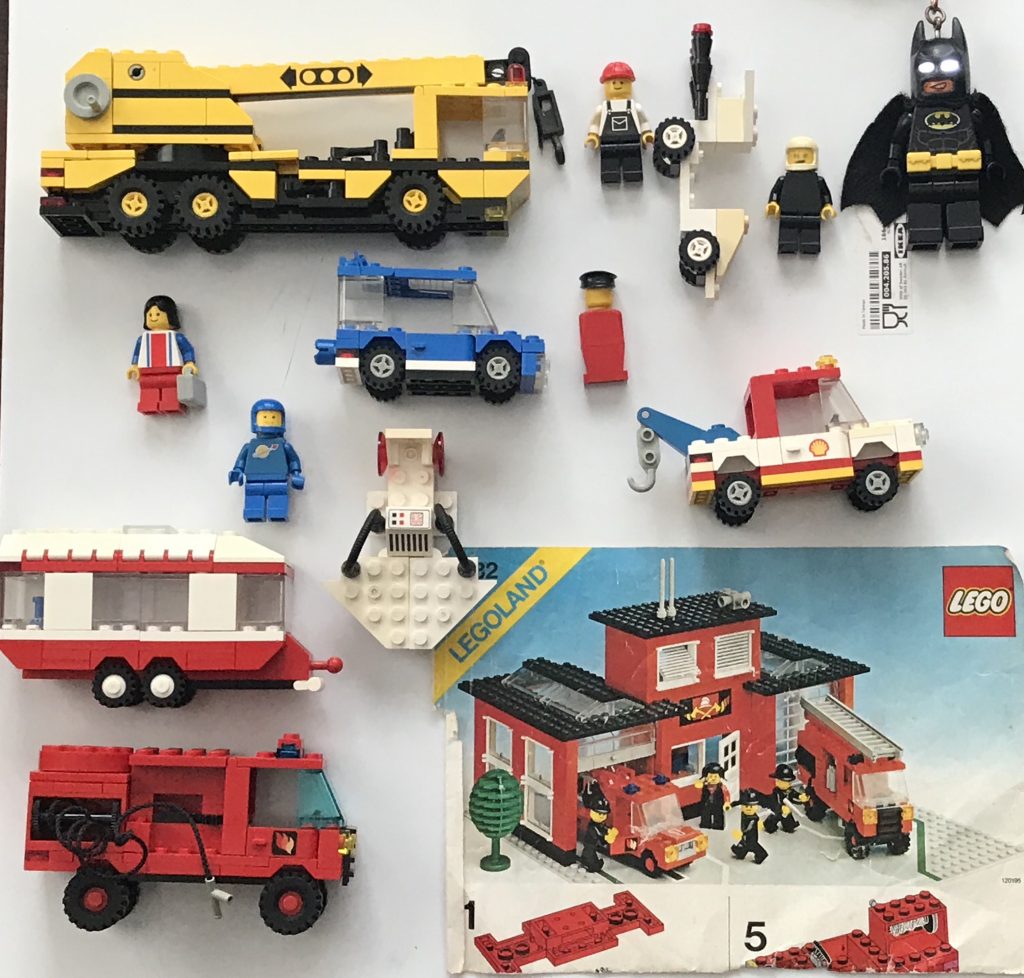
I always wanted to take LEGO photos but never got around to it. It was a case of “I’ll get around to it,” but I never did. With all the action figures I had collected and photographed, I assumed that when I took LEGO pics eventually, it would be as easy as shooting any other toy. Boy, was I wrong…
My chance finally arrives.
Brett Wilson offered me the chance to take some shots of the new STRANGER THINGS LEGO set. It was finally my chance to shoot LEGO.
I was pretty pumped to receive the package direct from LEGO HQ. The brief was simple: Take a series of shots that they could potentially use on the social media feed to promote the soon-to-be-released set.
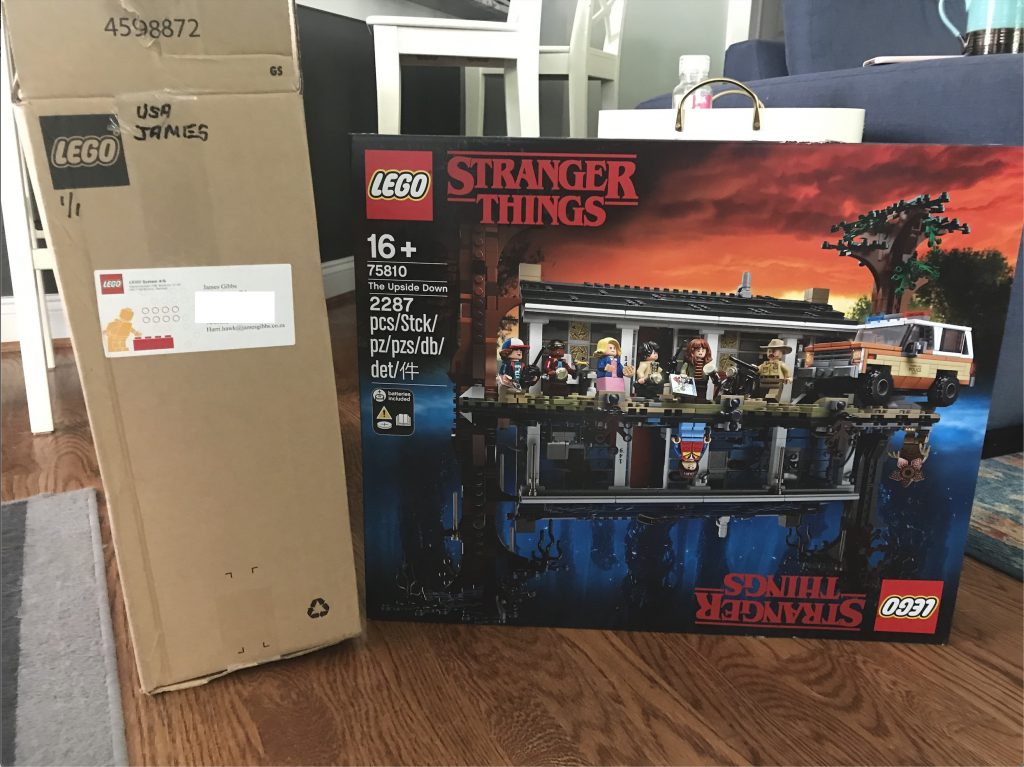
The set.
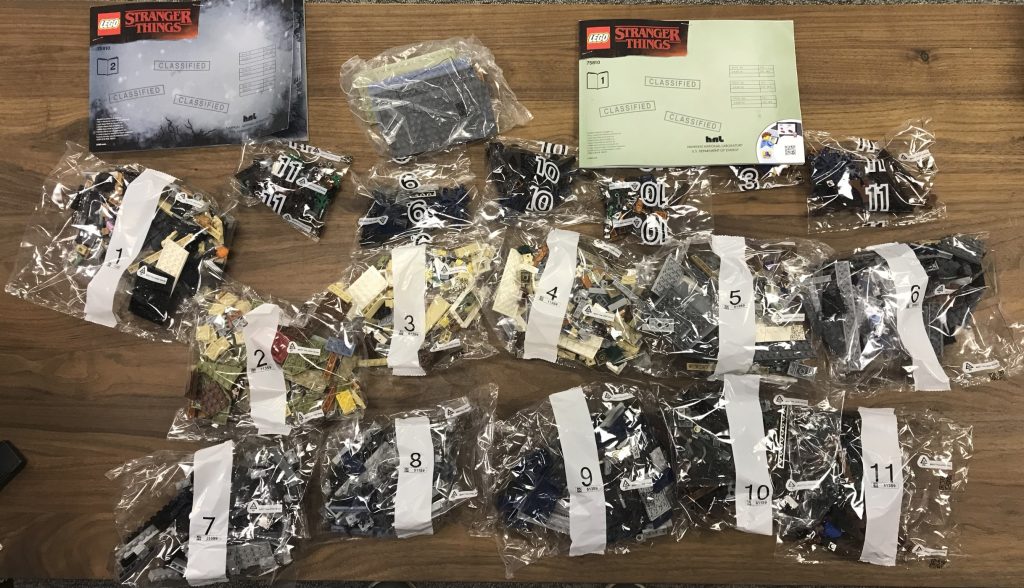
The set itself is impressive. With 2,287 pieces, it’s a hell of a structure. It is a must-have for any die-hard STRANGER THINGS fan. They have cleverly engineered it to be reversible from the real world to the Upside Down. The attention to detail in the Byers house is excellent, and the illuminating cube that colors the Christmas light wall is a cool feature.
The set came in 18 separate packets. My kids have gotten into LEGO, and I’ve helped build a ton of sets, but nothing with a piece count like this one. It took me a good couple hours over three days to finish it (while re-watching Series 1 and 2 of the show). Finally, it was time to shoot.
But now what?
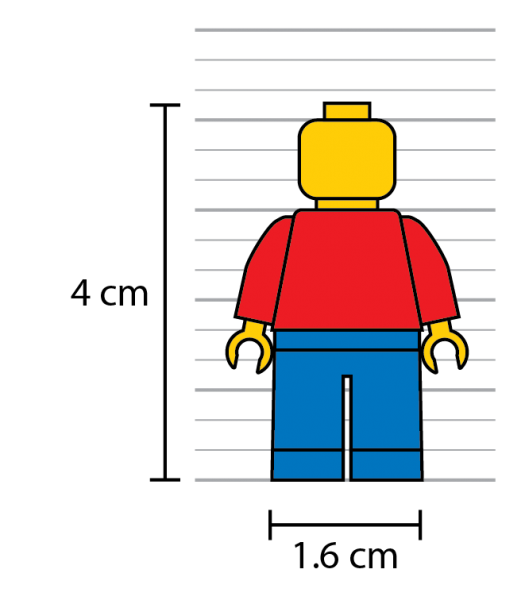
It dawned on me early on that I was no longer in my comfort zone. Having 6-inch and 12-inch, highly articulated toys to manipulate and pose was my happy place. Now I had 1.57-inch limited motion figures with very tight and small spaces in which to shoot them. In the beginning, it was very frustrating to try and get the shots I was envisioning. The lack of posability was the most significant speed bump for me. Lens choice was also a stumbling block. In my opinion, you want a wide enough lens to fill the whole frame with LEGO, as well as a macro to get close up to the action. At this stage of the game, I thought I had bitten off more than I could chew.
And viola!
After much trial and error—and I can’t emphasize the word MUCH enough—I finally succeeded in taking some decent shots. Two things that I concluded when shooting this set: 1. I stuck to two angles when taking the picture: straight-on or from a 45 degree. That helped define the framing and kept with the geometric structure of the LEGO itself. 2. Play with
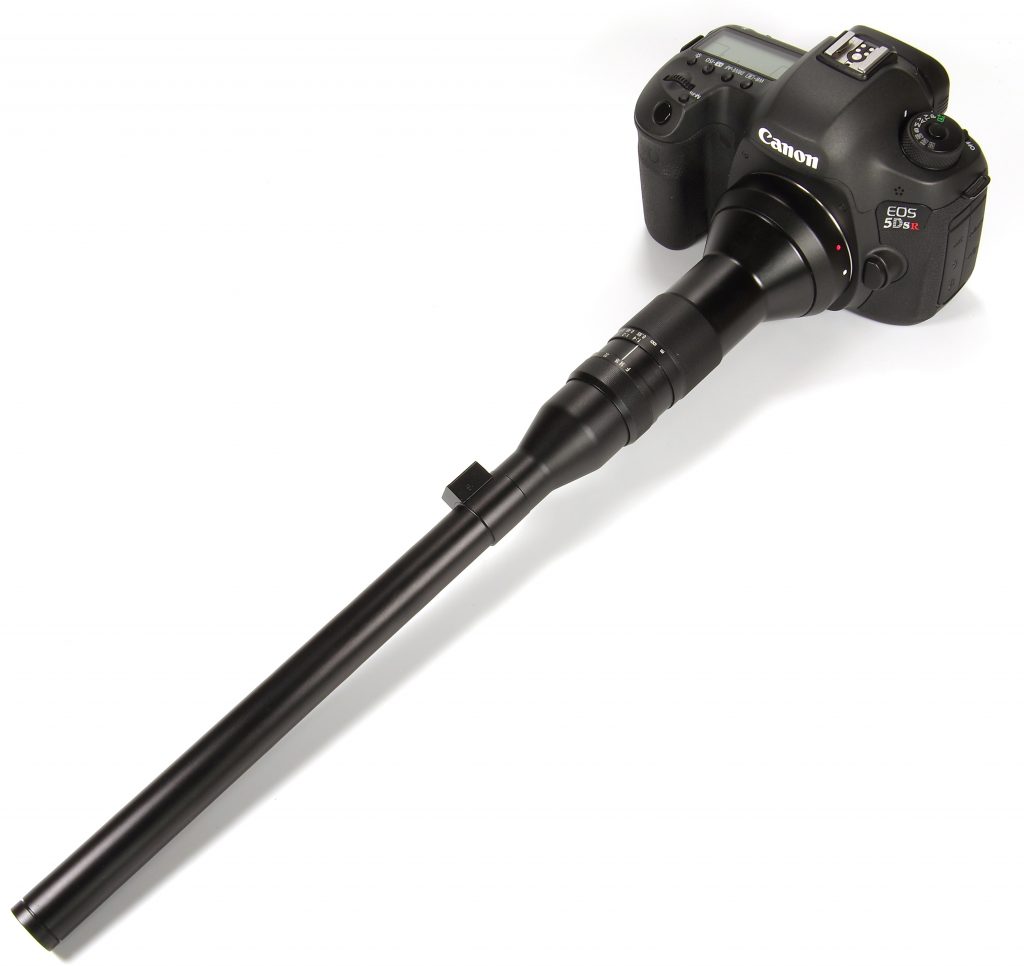
It gave me the ability to be right in the house or close up to the Demogorgon (literally 2–3cm away) to provide the illusion of scale. With the use of some laser pointer lights, my iMac screen as a background, slow shutter speed and some Photoshop lens flares, I was very happy with my first attempt at shooting LEGO.
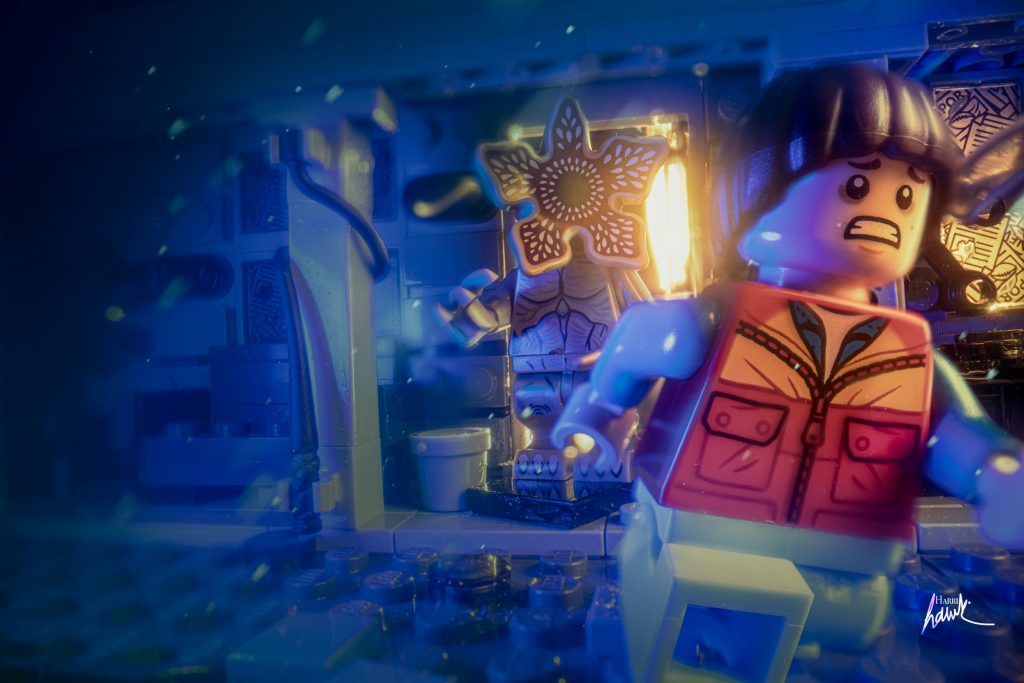
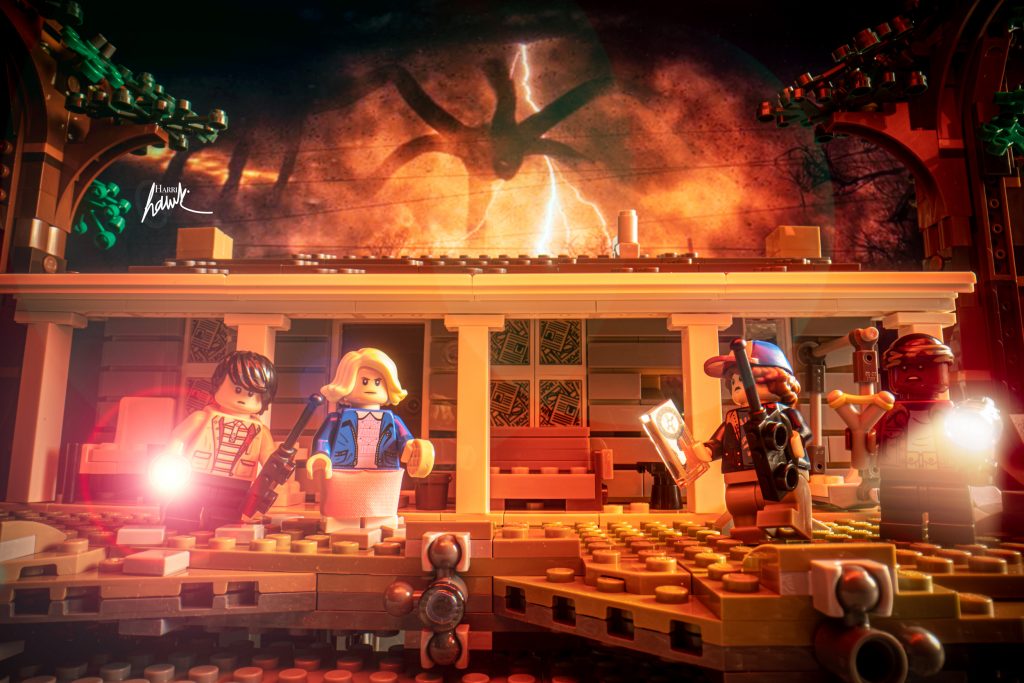

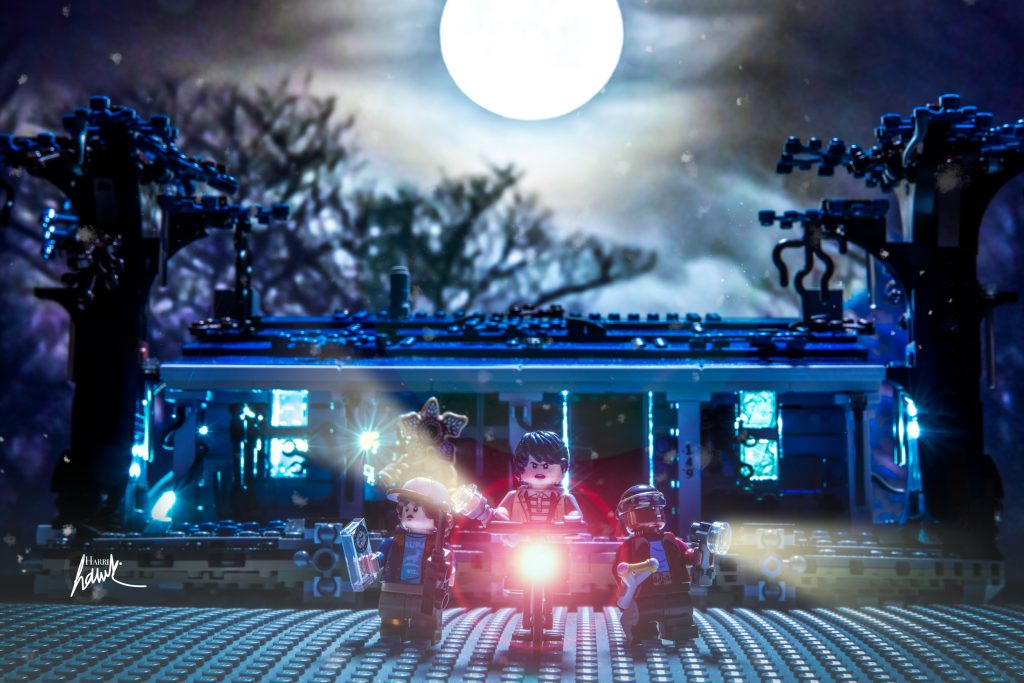
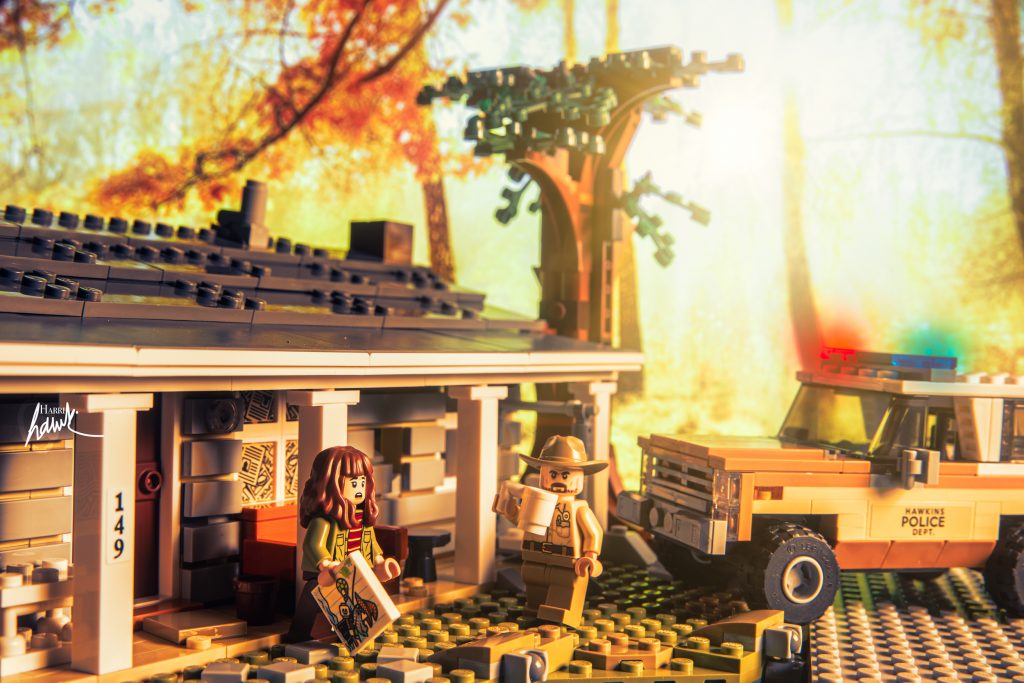
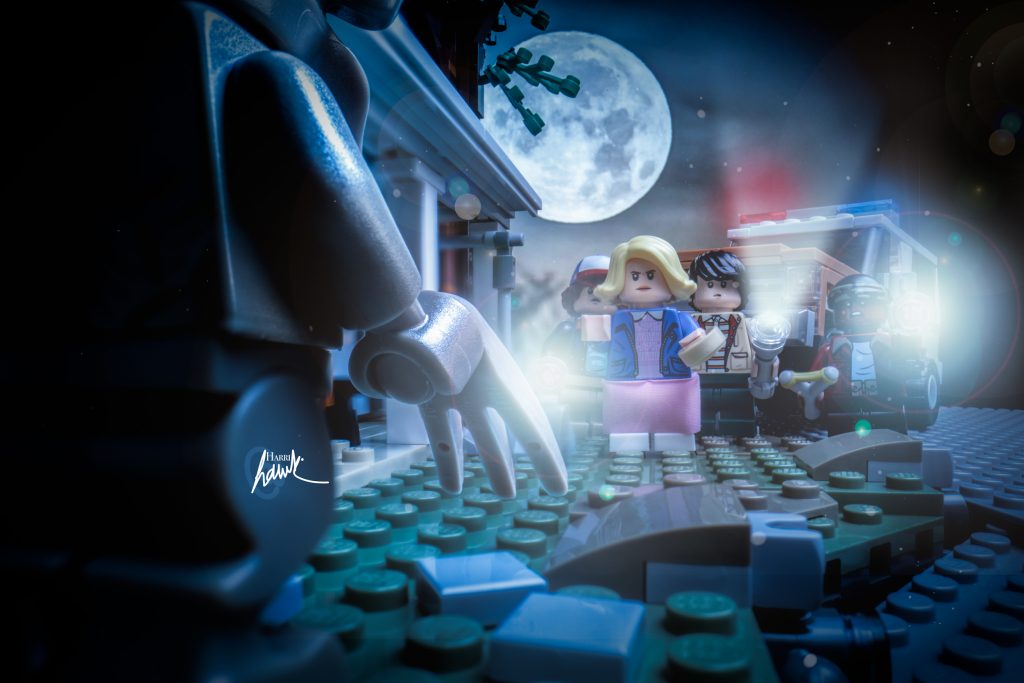
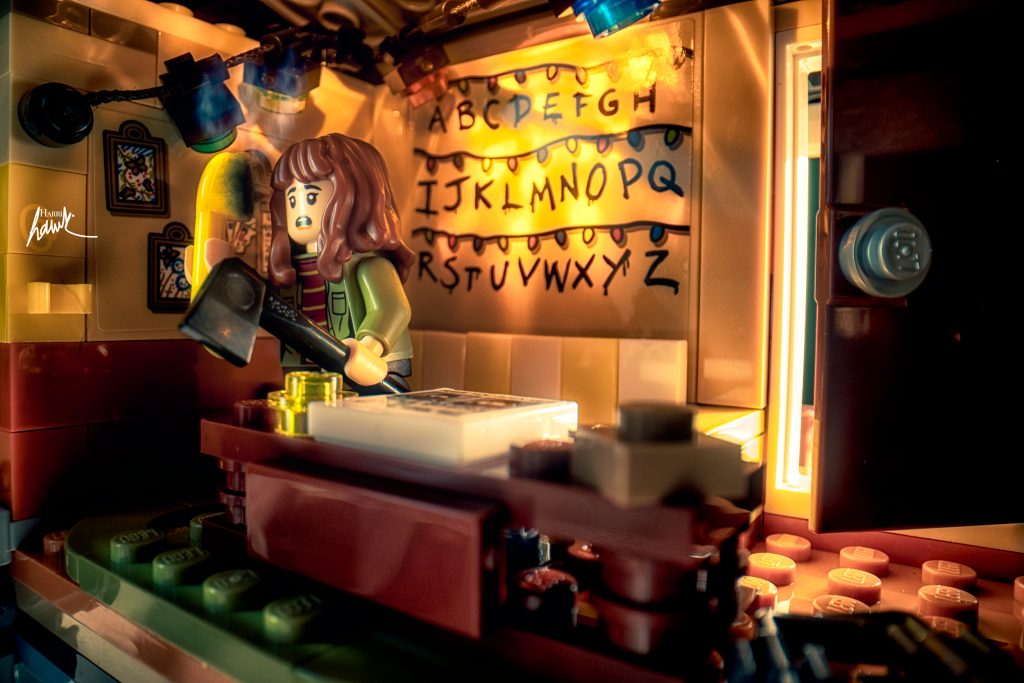
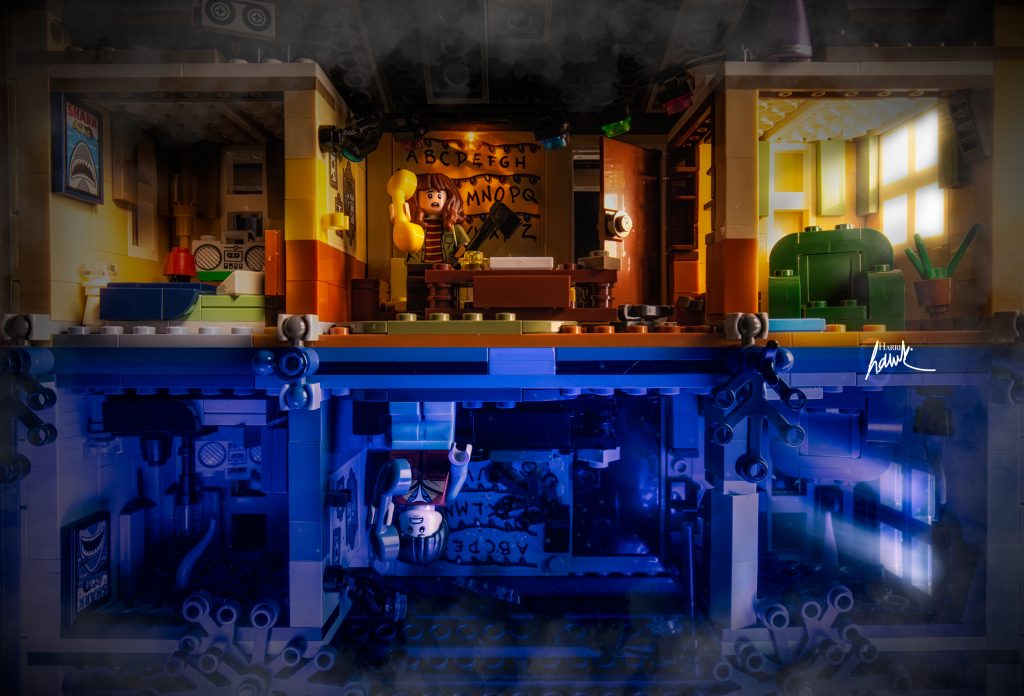
In conclusion.
We should all try and do some things out of our comfort zone now and then. I had gotten complacent with my technique for shooting action figures. It took a good while and a lot of trial and error, but it got my creative sparks firing, and an urgency to push myself past the comfort and into the unknown. It made it so much more rewarding—achieving something that I had to really push through to accomplish.
I used to look at LEGO photos from fellow toy photographers and not bat an
PS: I’m also super stoked that LEGO used my pics for their website and
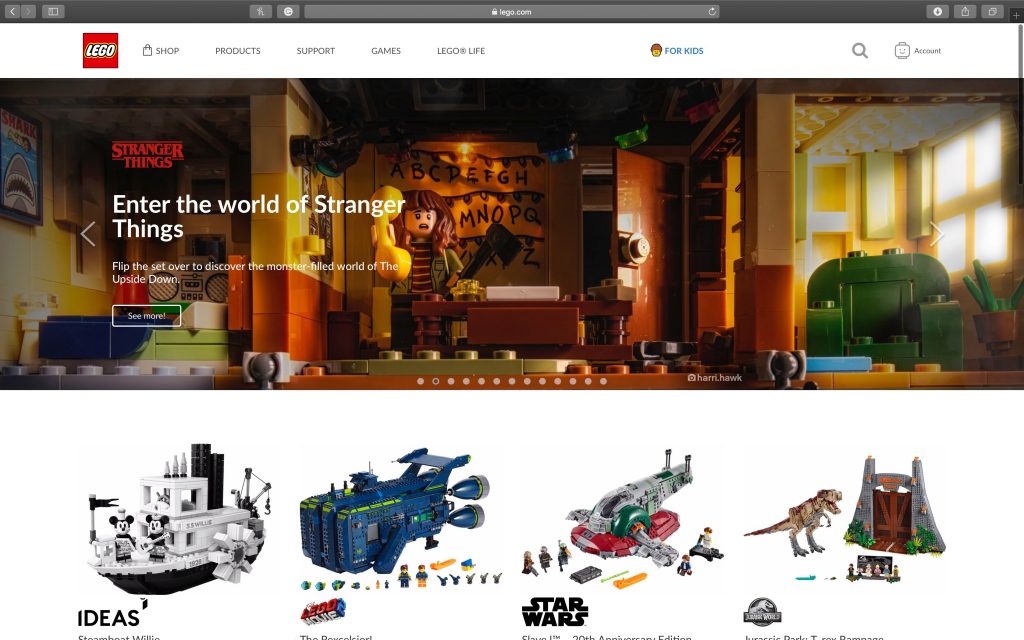
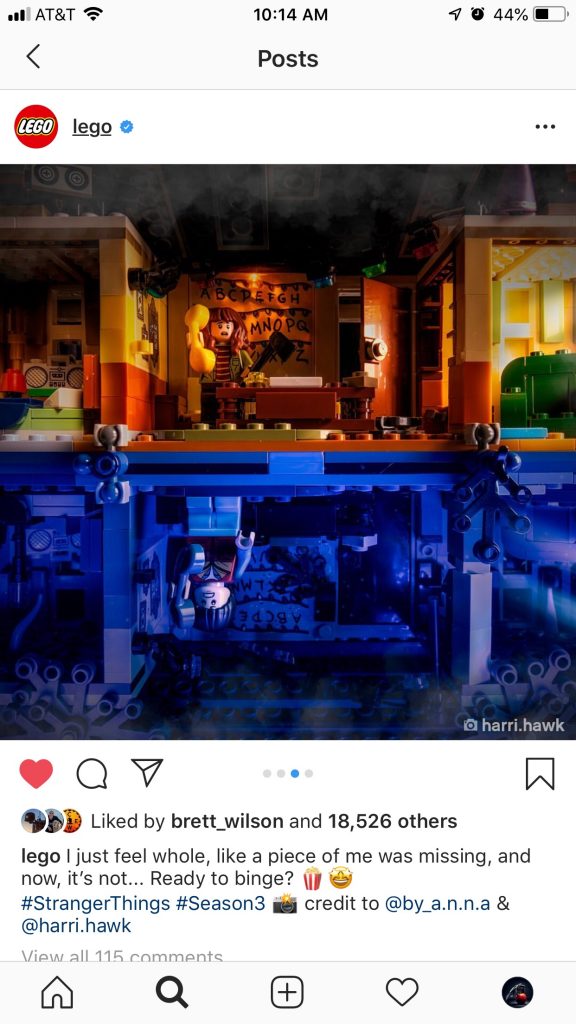
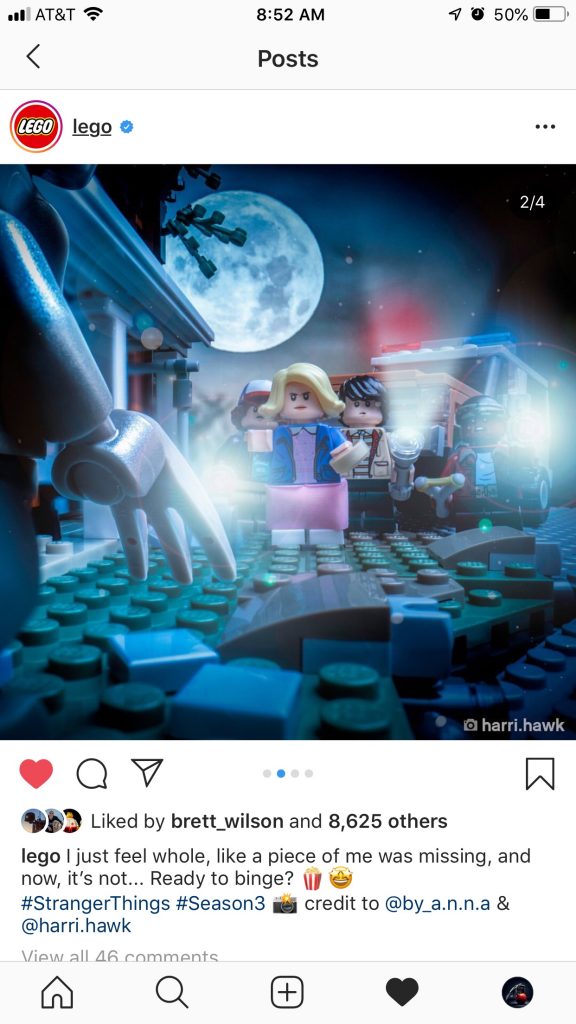
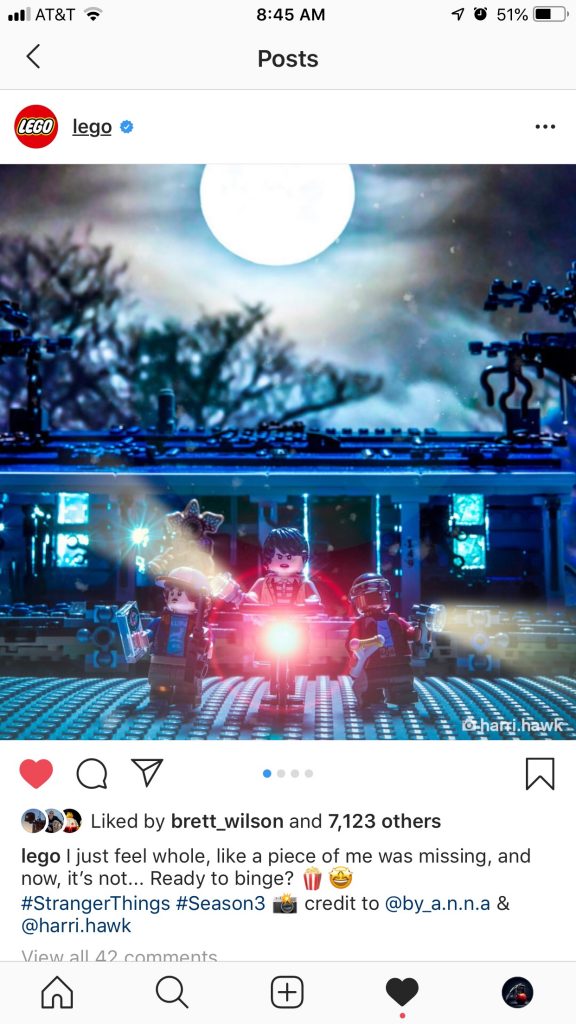


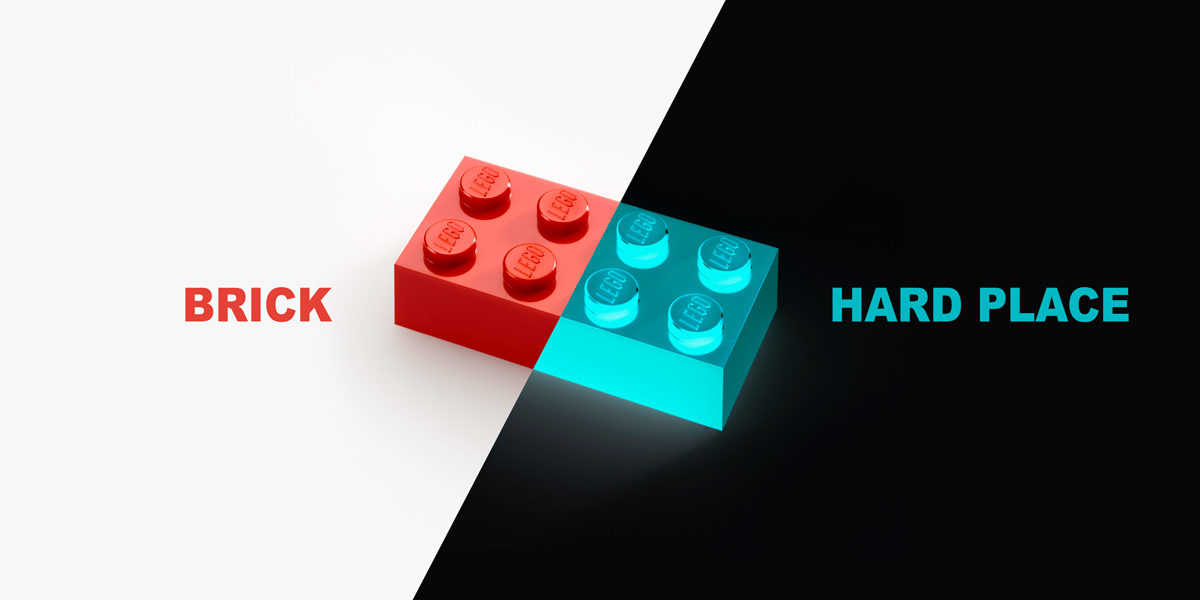
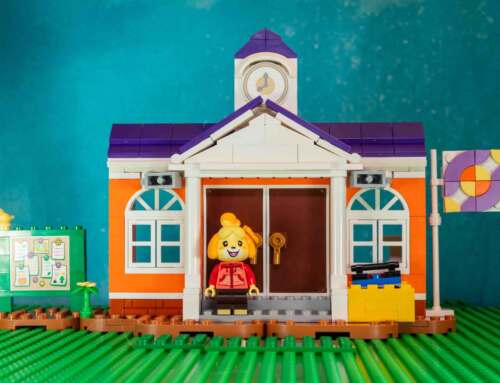
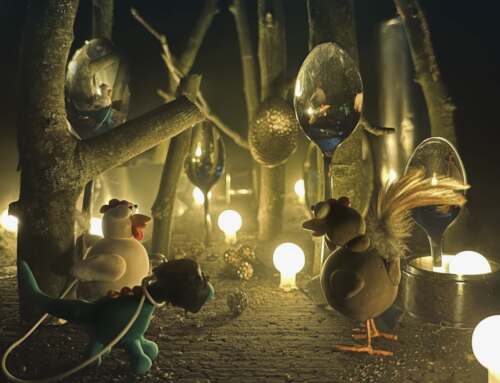
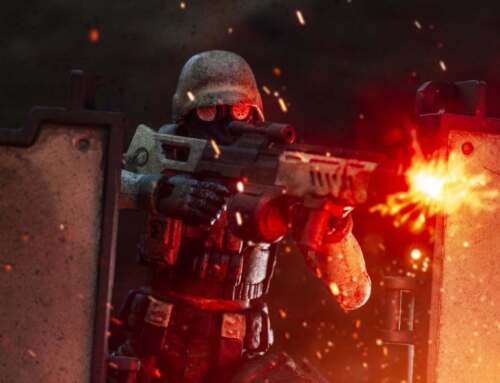
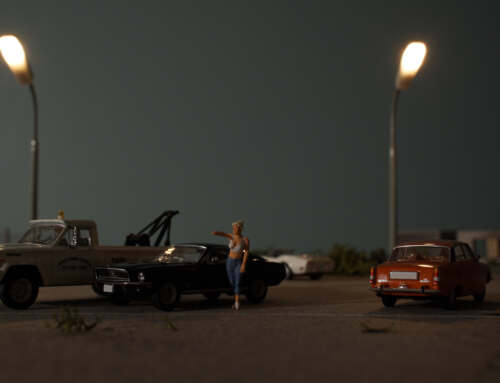
Awesome photos and I really enjoyed hearing your efforts to get those shots. I’m looking forward to getting that Starnger Things set when I’ve saved enough pennies. Congratulations on the the fact that Lego used your shots!
These are amazing results. Congratulations!
Great job, man! Fun to hear about the journey, and the unexpected challenges of shooting small, and shooting LEGO toys. Your work is always excellent, and I’m thrilled for you that LEGO used your pics so prominently!